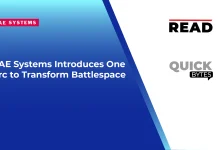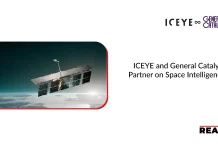Phosphorus Cybersecurity Inc., the leading provider of unified, prevention-based security management for the xTended Internet of Things (xIoT), is revealing groundbreaking new capabilities for enterprise Cyber-Physical System (CPS) protection at RSAC 2024 with its category-defining Unified xIoT Security Management Platform. The company is also hosting hands-on demonstrations of vulnerable IoT, OT, and IoMT devices with its one-of-a-kind Mobile xIoT Security Lab at the (un)Believable xIoT Security Suite at the St. Regis Hotel.
At a time when disruptive cyber attacks are increasing dramatically, proactive CPS Protection Platforms that discover, remediate, manage, and monitor vulnerable xIoT assets in mission-critical environments are emerging as a critical, leading market category.
As the industry’s only CPS Protection Platform proactively covering the entire security and management lifecycle for xIoT, Phosphorus is delivering unprecedented security capabilities to many of the world’s leading organizations, from manufacturing to healthcare and hospitality. The company’s award-winning, Gartner-recognized Unified xIoT Security Management Platform offers the industry’s only proactive approach to security management for the exploding IoT, OT, and IoMT attack surface.
“The Cyber-Physical System attack surface is growing exponentially across organizations in every industry vertical – creating a huge risk and liability gap as criminal and geopolitical cyber threats dramatically increase around the world,” said Mike Sullivan, President of WW Field Operations at Phosphorus. “As we’ve seen in recent high-profile attacks on MGM, Change Healthcare, and Omni Hotels, vulnerable, interconnected xIoT devices are putting mission-critical, life-critical, and business-critical operations in harm’s way, setting the stage for costly disruptions from potential ransomware and cyber-physical attacks. Now, more than ever, it is critical for companies to take a more proactive and preventative stance by discovering, remediating, monitoring, and managing every IoT, OT, and IoMT cyber-physical device – without hardware, agents, or hassle.”
The Industry’s Only IoT and OT Discovery and Remediation Platform
As part of its RSAC 2024 presence, Phosphorus is highlighting vital new security capabilities for enterprises that address the escalating threats to IoT, OT, and IoMT systems.
Phosphorus’ Unified xIoT Security Management Platform provides the most extensible Cyber-Physical System device coverage, with over 600 different IoT, OT, IoMT, and IIoT device vendors and more than one million unique device models covered, surpassing legacy passive solutions dependent on network monitoring. Currently deployed in Fortune 500 networks, the platform includes complete discovery and visibility of every IoT, OT, and IoMT device, high-fidelity risk assessment, point-in-time xIoT device posture review, seamless password and configuration hardening, agentless remediation, and ongoing xIoT monitoring and management.
Phosphorus’ patented Intelligent Active Discovery (IAD) engine is the world’s fastest, safest, and only scalable active discovery solution that leads the industry in visibility completeness, classification accuracy, discovery depth, and mean time to inventory, with no network impact.
The platform’s unique ability to communicate with embedded xIoT devices in their native protocols allows it to provide full inventories and 100% device certainty the first time – while also providing the broadest depth of high-resolution risk assessment and device metadata. The company’s evidence-based risk assessment capability collects over 3X more data points from xIoT assets than other services (including high-fidelity analysis of device posture, status of device credentials, current firmware version and CVEs, certificate status, risky configurations, end-of-life status, banned devices, etc.) making it significantly more granular and accurate than traditional vulnerability scanning or passive network monitoring-based approaches.
SOURCE: GlobeNewswire




